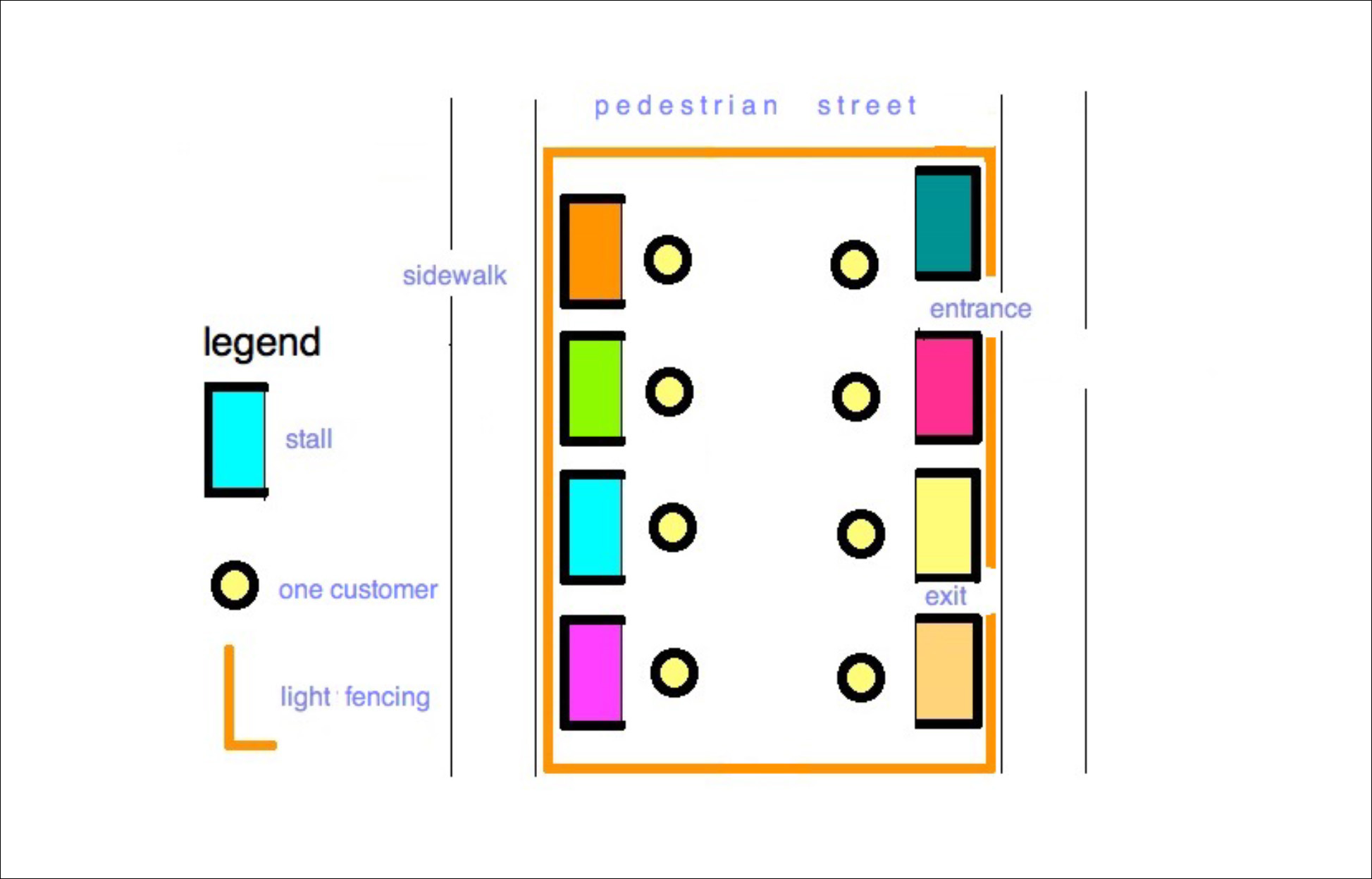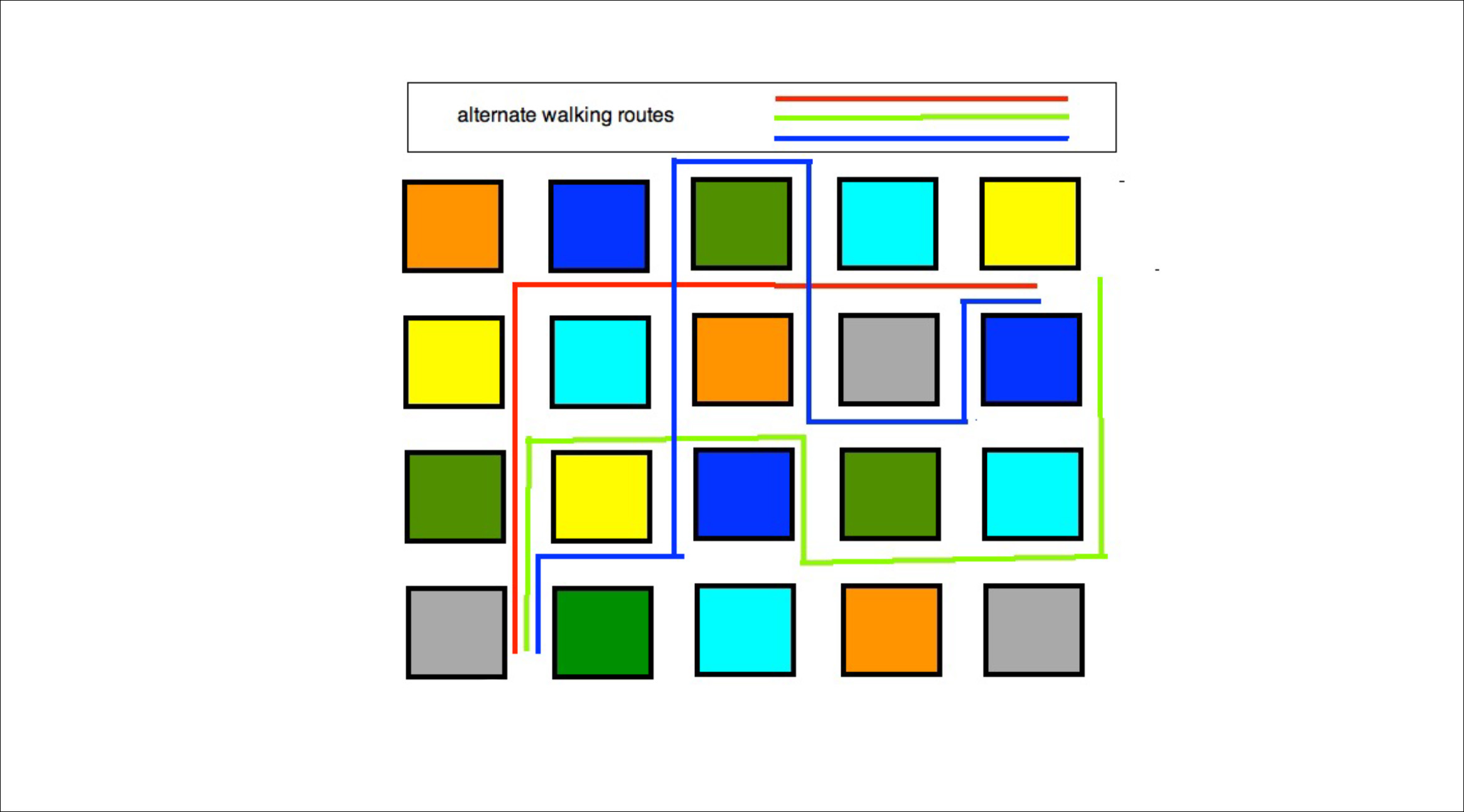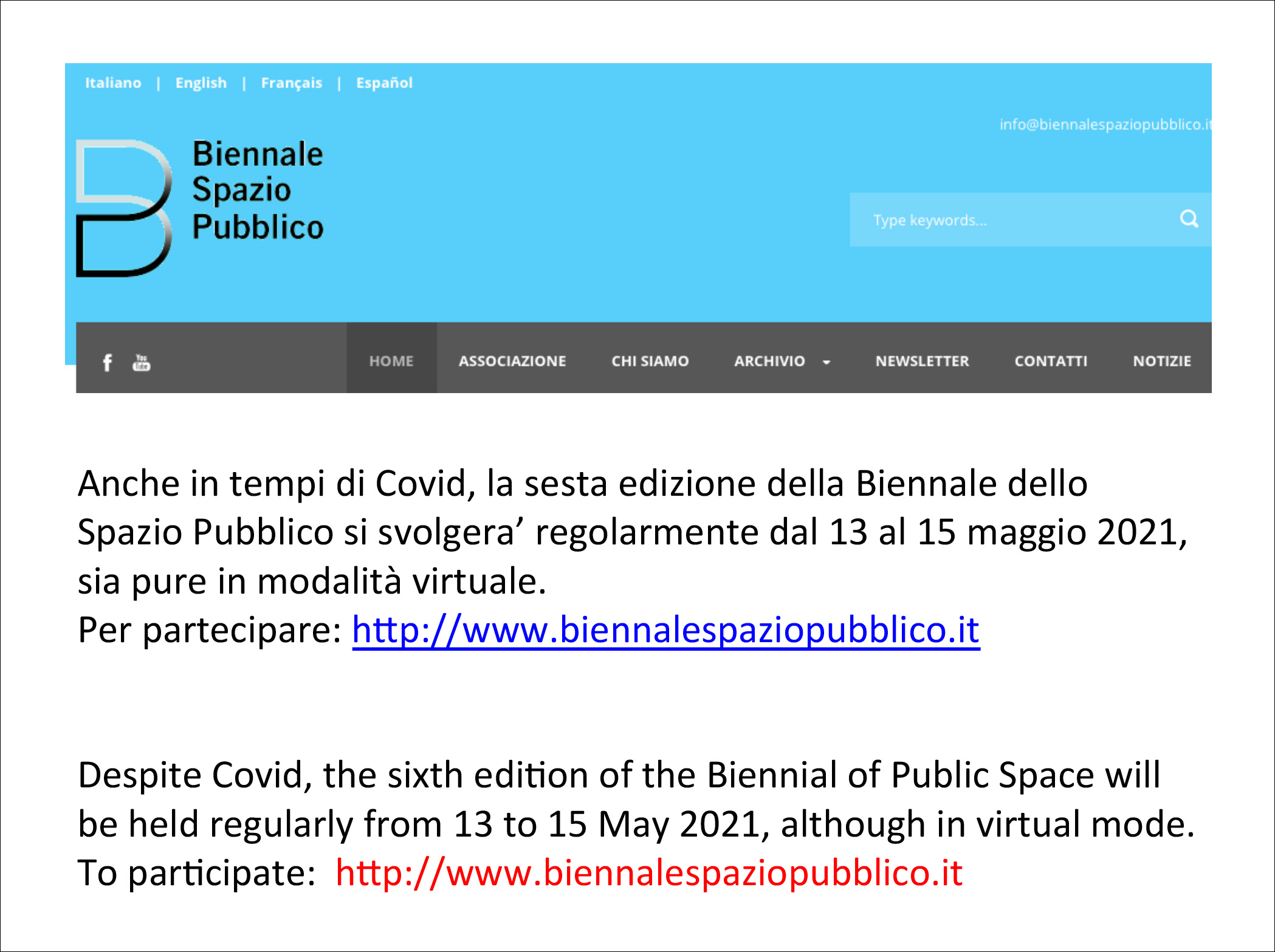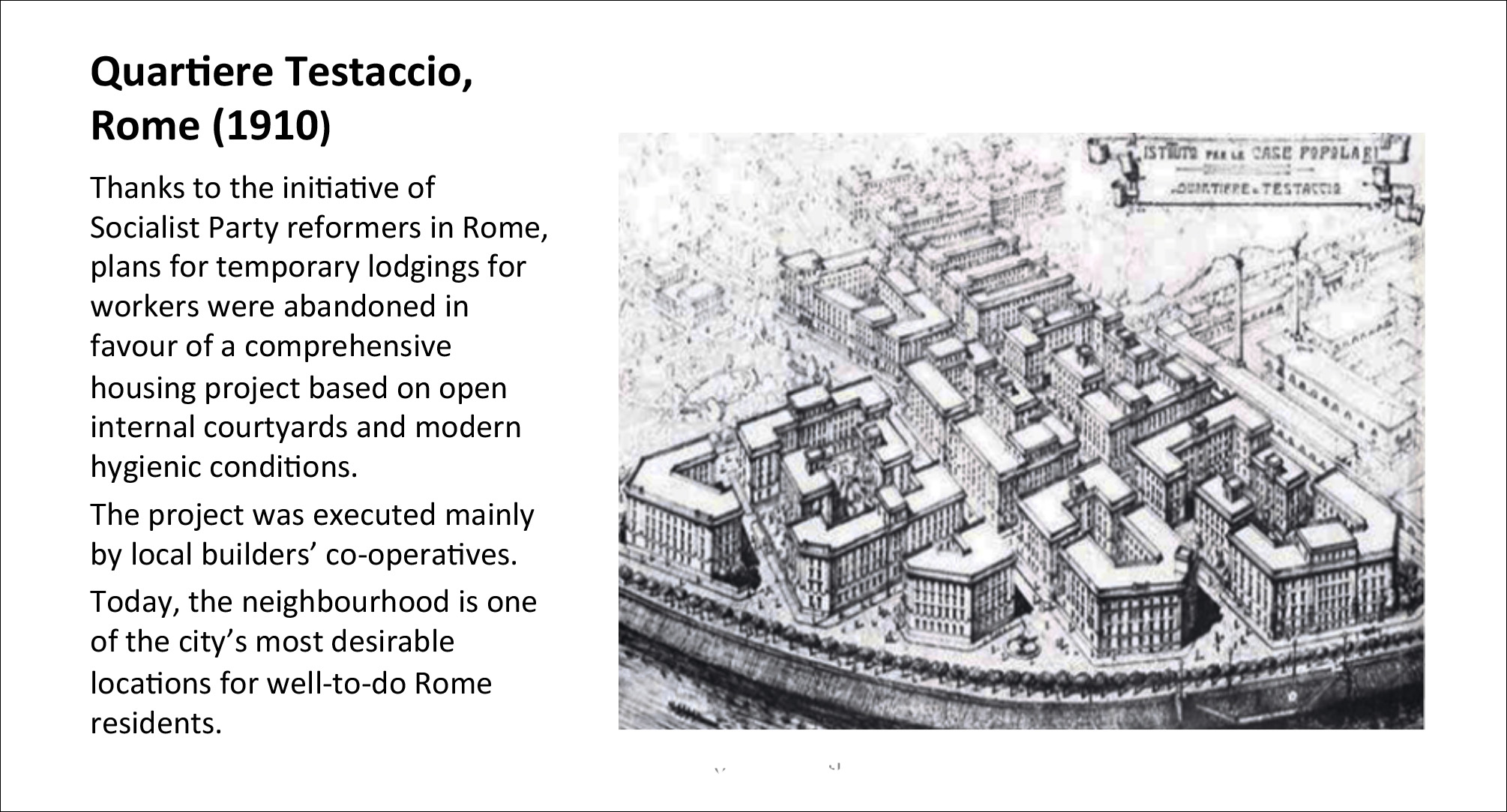urban development social capital collaborative urban design open spaces citizenship anthropology digitalization industrial sites ricerca urban design historic centers landscape city-regions brownfields news fragile territories downtowns Cohesion history urban projects revelation sociology habitability cartography premio tesi di laurea
Stadgeist or the Spirit of The City:
Romantic Escapism
or Urban Humanism?
Pietro Garau
Strangely, stadtgeist is not a common term, despite the fact that cities are undoubtedly one of the most important spiritual constructs of humankind. But we like the idea of adopting “stadtgeist”, or “The spirit of the City”, to underline the fact that cities are not simply physical and material realities, elected places of abode, production and commercial exchange, but the embodiment of some of our highest spiritual traits - reflection, togetherness, privacy, ingenuity, collective endeavor, and a sense of identification with our material and natural surroundings.

1. Stadtgeist | P. Garau, computer graphics, Paper 53.
All of this could not be farther away from the sugar-coated images pictured in renderings and beautification projects illustrating a manufactured concept of city life - typically, serene burghers happily seated in the open air on a sunny day.
Cities can be harsh places, and their public spaces are normally interpreted as transfer corridors from homes to other places devoted to work, education, entertainment and other functions, and back. Speed and efficiency are paramount. Productivity reigns supreme. Parks, gardens and trees are there to increase real estate values, more than to recreate citizens of all ages.
In fact, urban advocates keen on justifying public investment in cities often extol their economic centrality, thus recognizing their subservience to the development model that reigns supreme in our contemporary post-welfare world.
Stadgeist negates utilitarian and neo-liberal usurpations of the city. In this sense, it is a revolutionary concept, certainly closer to Karl Marx’s indictment of human alienation than to current popular celebrations of urban creativity or to the technoinebriation of the “Smart City”. Stadgeist is “slow”. It interprets the city as a place we can develop a strong affection for, without hurry - and precisely because, being a human product, it is also a visible expression of the human spirit. But this affection is not a flâneur’s amusement, nor a tourist experience.

2. Adjusting to the pandemic, Rome, Spring 2021 | P. Garau, computer graphics, Paintbrush.

3. Stealing a Walk: Inventing Alternate Walking Routes |
P. Garau, computer graphics, Paintbrush.
It is built by visiting the “four cities of wonderment”. The first one is the City of the “Magic of the Ordinary”: why is it that all the plain things we see walking around any normal neighbourhood - a corner shop, a child eating an ice cream, A public fountain, shades of trees in a square - can give us a sense of unexpected pleasantness?
Then we have the City of the Miracle of Co-existence - what is it in a city that allows us to wonder everywhere in safety and exercise our right to solitude, but in everybody’s company, or to join others playing ball in a park, without this seeming odd or rude? Ah, but let’s not forget the City as a Marvelous Machine: a place where thousands of people we never see give us light to read by at night, water to drink when we want to, energy to warm us up, sidewalks and streets and paths and buses and subways to move and wander, ways where rainwater can disappear; and what about the Fourth City of the Planet of Hope, where we can enjoy all these things knowing that we do it using the smallest possible amount of space and not having to drive long distances because most of what we need is at the end of a short walk?

4. Monteverde Vecchio, Rome | P. Garau.
No, it’s not Fairville or the Truman Show’s Sea Haven. It’s most likely the very real urban neighbourhood we live in, and that we take for granted. Particularly if we are fortunate enough to live in the neighbourhood of a European city built around 100 years ago, at times when planners built cities without even suspecting they were being “sustainable”.

5. Biennale dello Spazio Pubblico 2021 | P. Garau.
Affection for the city must be nourished because it is the best way to build consensus about the need to invest material resources into the places that embody their collective value. And this consensus is best built if we appeal to the learning ability, candid inquisitiveness and non-biased nature of the younger generations. This is why “learning the city”, a project to be launched at the imminent Biennial of Public Space, has “Steidgeist” as its founding principle.

6. Biennale dello Spazio Pubblico 2021 | P. Garau.
Has this anything to do with the slightly mysterious rediscovery of the mythical “Bauhaus” recently advocated by President of the European Commission Ursula von der Leyen? Perhaps. But we can certainly start in earnest by developing reading materials, perhaps an app, to activate a learning dialogue with our younger fellow burghers. The challenge is fascinating, particularly for designers and planners. We might rediscover our lost sense of ordinary wonderment thanks to our most important clients, and re-learn from them basic Stadgeist principles - fascination, curiosity, belonging, discovery, gratitude, and togetherness.
Pietro Garau is an Italian urbanist who has devoted most of his professional life to the pursuit of urban planning as a tool for achieving social equity and sustainable development.
He was head of research at UN-Habitat and co-led international task forces for the implementation of the UN’s Millennium Development Goals and for the 2016 Habitat III Conference of the United Nations. He taught Urban Policy at Sapienza Università di Roma. He promoted the “Charter of Public Space” and is currently engaged in the organization of the sixth Biennial of Public Space.
"Stadgeist or the Spirit of The City: Romantic Escapism or Urban Humanism?" | Article published on Planum. The Journal of Urbanism n. 41, vol.1/2021 | www.planum.net
To send proposals for articles and contributions, write to
Planum Editorial Staff | planum.magazine@gmail.com




Planum
The Journal of Urbanism
ISSN 1723-0993
owned by
Istituto Nazionale di Urbanistica
published by
Planum Association
ISSN 1723-0993 | Registered at Court of Rome 4/12/2001, num. 514/2001
Web site realized by ChannelWeb & Planum Association | Powered by BEdita 3








